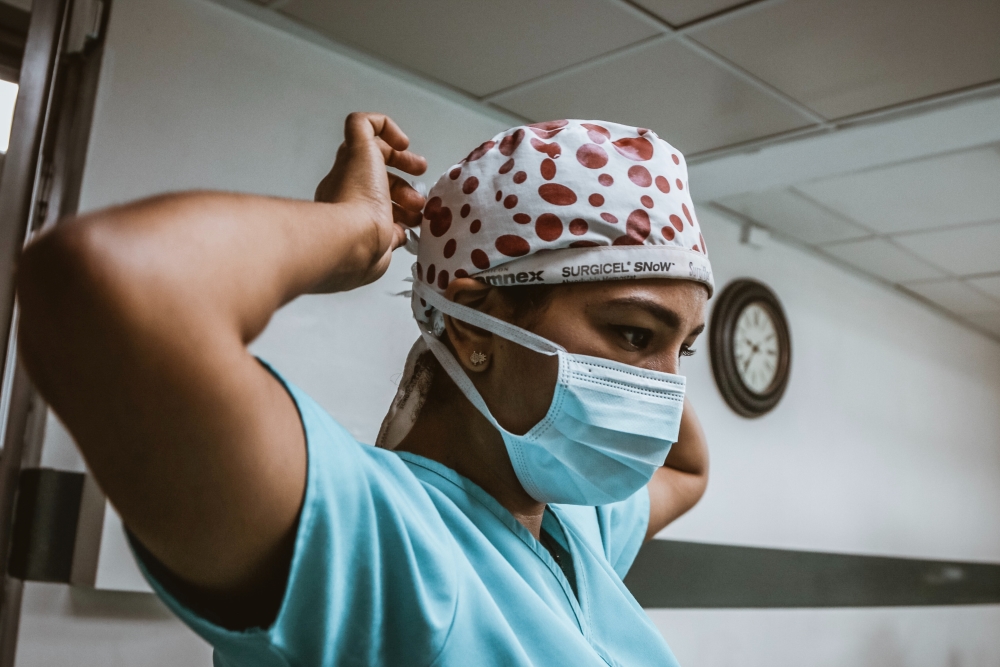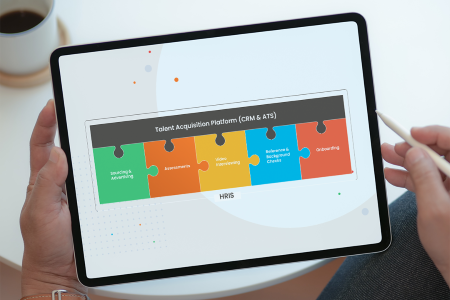
The healthcare industry (including the aged care and social assistance sectors) is the largest employment sector in Australia, accounting for 14% of the total workforce. Typical healthcare professionals are nurses, aged/disabled carers, medical practitioners and childcare workers. People in these roles work across hospitals, clinics, and agencies from government and non-governmental organisations. With such a large portion of the workforce in these sectors, the recruiting in healthcare is critical.
Unfortunately, healthcare recruiting in Australia is under considerable stress. The industry is plagued by skill shortages, an ageing (and soon to retire) workforce, increasing demands of an ageing population, and service inequality and accessibility issues, especially in rural, low socioeconomic and Indigenous groups. The impacts of the pandemic are accelerating talent shortages and exacerbating the already great difficulties of finding quality healthcare workers. Australia’s demand for nurses alone will significantly exceed supply, with a projected shortfall of approximately 85,000 nurses by 2025 and 123,000 nurses by 2030. That projection is only factoring nurses and not all other critical healthcare workers. Healthcare organisations are one of the few where talent acquisition can be a life-or-death issue. Furthermore, attracting, training, retaining, and sustaining these workforces is equally critical and challenging.
While these talent issues may be overwhelming, human resources professionals can solve them with essential technology and a fail-proof recruitment process. It is paramount that HR teams recruit strategically, creatively and progressively to remain competitive and fill open positions and gaps in the healthcare sector. Modern recruitment platforms like LiveHire offer a best-of-breed staffing solution that combines powerful talent pooling functionality with an applicant tracking system for healthcare recruiting. These features empower recruiters to actively manage all potential candidates in a single live database during the hiring process and avoid losing valuable applications when a job requisition is closed. LiveHire can also connect to your human capital management platform (e.g. SAP SuccessFactors) to share data via an API. Below we examine five key challenges talent acquisition teams face in the healthcare sector and outline solutions offered by technology to solve these critical challenges.
Talent Pooling for Healthcare Recruiting
Talent pooling is the best tactic HR teams can use to maximise the number of suitable healthcare candidates. When an organisation has multiple qualified candidates shortlisted for a role, the candidates that miss out on an offer (i.e. ‘silver medallist’s) should not just be forgotten – they should flow into organisational talent pools. While they may not have been suitable for a current position, they could be the perfect fit for a future role. This avoids job seekers needing to reapply each time a new job posting is created thus improving your candidate experience.
LiveHire is uniquely positioned to help organisations implement this tactic. Our approach to sourcing is to build and nurture strong relationships before hiring requirements arise. It starts with creating a technology-powered talent community. The talent community serves as the destination for all talent interested in working for your organisation. LiveHire has a modern user interface and built-in intelligent matching algorithms, which identify and suggest candidates well-fitted to available roles. LiveHire also enables you to filter your talent community into talent pools, curating a collection of specialised, engaged candidates for a particular job opening.
“We moved from a completely manual recruitment process to using the LiveHire software, revolutionising our processes. We now have analytics, a positive candidate experience, and a proactive talent pool. [The difference has been] life-changing.” Catherine McMahon, Chief People Officer at Greengate.
Engaging Candidate Relationships with Healthcare Workers
Recruiting in the healthcare requires short and long-term relationship strategies and authentic communication. In a candidate-short market, these relationships matter even more. What happens to those qualified candidates that are your silver medallists? Or those that don’t yet have the right experience but are working towards it? How do recruiters track and communicate regularly with them?
Talent acquisition and human resources professionals need to work together to create a “total talent management” (TTM) strategy that aligns with your organisational workforce plan. TTM is a holistic strategy to manage internal and external talent for current and future roles while simultaneously developing organisational capabilities within learning and development (L&D) teams. An effective TTM strategy may include creating talent pipelines of (internal and external) candidates for hard-to-fill roles, future roles or emerging roles. Potentially, TTM can also be used to pipeline candidates with high-demand skills and monitor candidates working towards specific skill development. Such strategies enable recruiters to transition candidates to the ‘ready-to-hire’ pipeline status when their skill acquisition phase is complete.
Although this is the gold standard of talent management, it has been nearly impossible to implement due to recruitment software only managing external candidates. LiveHire takes a different approach. LiveHire’s intelligent matching suggests the most suitable candidates across multiple unique talent pools. Crucially, talent pools are not limited to external candidates – they can include current employees (internal) and alumni. current employees no longer have to apply to the external website to be considered for a promotion or lateral career move. current employees can also keep their skills and qualifications up-to-date on their LiveHire profile. LiveHire’s intelligent matching will flag candidates to recruiters when they become qualified and available.
Recruiters can further use LiveHire’s two-way communication to email and SMS message candidates. SMS makes communication fast and consistent, which keeps your organisation top of mind for candidates. It also means recruiters are less burdened by old fashioned ATS-style click through screens and decentralised messages in email inboxes, freeing up their time to curate the talent pool and build an authentic rapport with suitable candidates.
Healthcare-specific Employer Branding
Your employer brand is critical in a skills shortage. Healthcare is a tight-knit community where word-of-mouth matters. Investment in your employer brand is necessary for superior hiring outcomes in healthcare recruiting. Your employer brand is what you choose to tell the world, how you live your brand and what people say about you. Employer branding impacts your ability to attract great talent into your organisation and your ability to retain that talent once they have decided to grow their career with you.
To activate your employer brand in the healthcare sector, talent acquisition (TA) teams focus on three simple steps:
- ContentTA teams collaborate with their marketing departments to leverage existing content or write new content that may be interesting to prospective healthcare workers. Best practice organisations develop engaging content such as employee and manager interviews, day-in-the-life case studies and insights into the company’s culture and values that can be included in job descriptions.
- ChannelsMarketing departments already use social media channels and content, which TA teams can leverage. For example, a YouTube search for the LiveHire client Telstra Health returns content informing candidates about the organisation. Other marketing content that TA teams can leverage might include infographics, blog posts and thought leadership.TA teams should work with their marketing teams to leverage existing and new content via social media channels. For example, to generate applications for ‘Expressions of Interest’ or promote critical job vacancies (e.g. “We’re Hiring [insert hard to fill role]”). TA teams can work with marketing to create, improve or promote their career site to increase traffic and applications. Improvements to job descriptions can have a tremendous benefit to attracting potential hires in your open healthcare positions.
- ExperienceExperience is one of the essential parts of your employer brand activation. Our next point takes a deep dive into the candidate experience.
Prioritising Candidate Experience
Candidate experience is increasingly crucial in a tight healthcare labour market. Candidates are putting a more consumer-based lens on their experiences. They have become more vocal in sharing their frustrations on social media and review platforms or choosing not to apply if the experience doesn’t suit them. According to CareerBuilder, 60% of job seekers will abandon their online job application halfway through. A bad candidate experience could result in your organisation missing out on top healthcare professionals. Establishing a positive relationship keeps candidates warm for other roles or future healthcare jobs. Candidates are also more likely to recommend your brand to their friends and families, who may become new candidates or customers.
Technology is one of the most important ways you can help improve your candidate experience for healthcare recruitment, as demonstrated below:
Mobile Optimisation
Mobile optimisation is a significantly important aspect of creating a great candidate experience. Data shows that over 92% of Australians own a smartphone – whereas only 63% have regular access to a computer. LiveHire is designed to provide a stellar mobile-first candidate experience that allows for the fast upload of resumes (only minutes to complete) from various sources (e.g. Word documents, LinkedIn, and more). Mobile optimisation is a hugely important accessibility factor for rural and remote candidates – LiveHire ensures candidates in these regions don’t drop out of your talent net.
Two-way Communication
Using LiveHire, candidates communicate directly with recruiters through the platform. Because two-way SMS messaging is embedded, the median candidate response time (via SMS) is only 17 minutes. A rapid candidate response empowers recruiters to shorten the time-to-hire period. Additionally, LiveHire’s seamless communication capabilities help your candidates feel authentically engaged, resulting in a more humanised candidate experience while recruiting in healthcare.
Frequent Application Notification
LiveHire’s bulk communication technology can help recruiters communicate en masse to candidates during the hiring process. Recruiters can use the bulk communication function to provide timely updates to candidates, such as changes to their hiring status or additional role information. Bulk communication is highly effective at keeping candidates engaged throughout recruitment processes, giving healthcare organisations a competitive advantage.
Total Talent Management
In the past, hiring practices and platforms focused exclusively on external talent for permanent and casual roles. Today’s modern workforces comprise more than just permanent and casual workers – they include non-permanent staff, such as fixed or maximum term contracts and contingent/labour hire. Many organisations require the ability to scale down and redeploy staff en masse or stand staff up for a brand new division. Recruiters must manage all these types of talent and hire staff against all of these strategic initiatives.
LiveHire is uniquely positioned to support organisations along the journey towards “total talent management”, in line with its company mission to empower the flow of the world’s talent. The LiveHire platform is designed to enable recruiters to manage the flow of talent in the hiring process from three perspectives:
- External talent coming into the organisation,
- Internal talent requiring redeployment or transitioning into a new role, and
- Visibility and management of contingent labour. Recruitment teams have one place to manage all candidate types and deliver all hiring strategies.
LiveHire’s partnership with Telstra Health has saved $1.2 million in recruitment costs through more effective management of talent, including contingent workers.
“Through partnering with LiveHire, we’ve not only been able to implement a system that offers a beautiful candidate experience but also a solution to work more efficiently with our recruitment agencies which will always offer a source of talent, particularly in the contractor market for Telstra Health.” – Carly Currie, Head of Recruitment, Telstra Health.
Download the full case study here.




